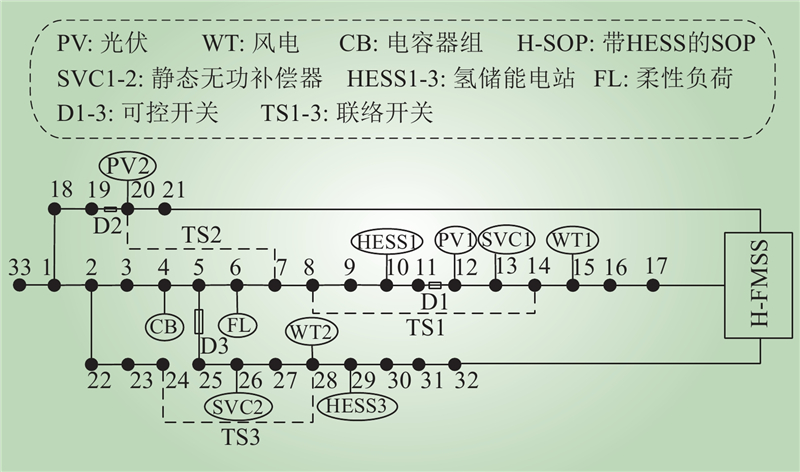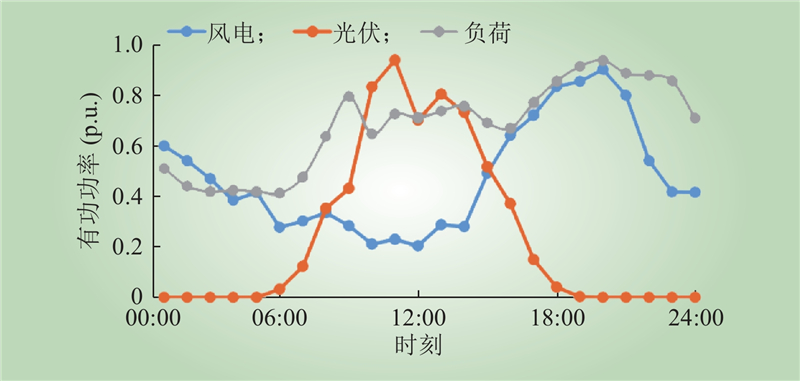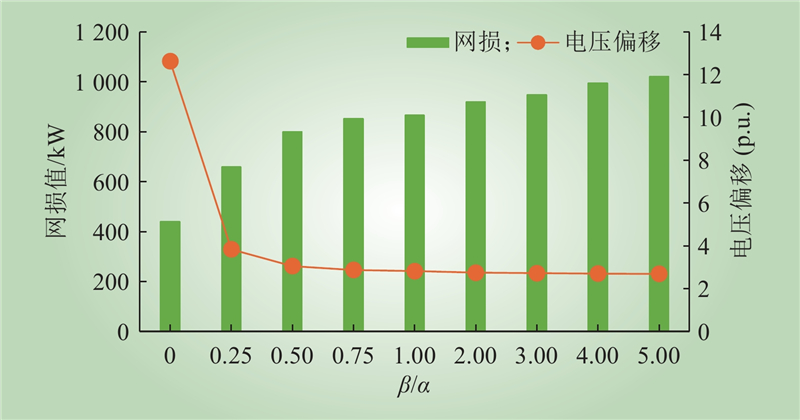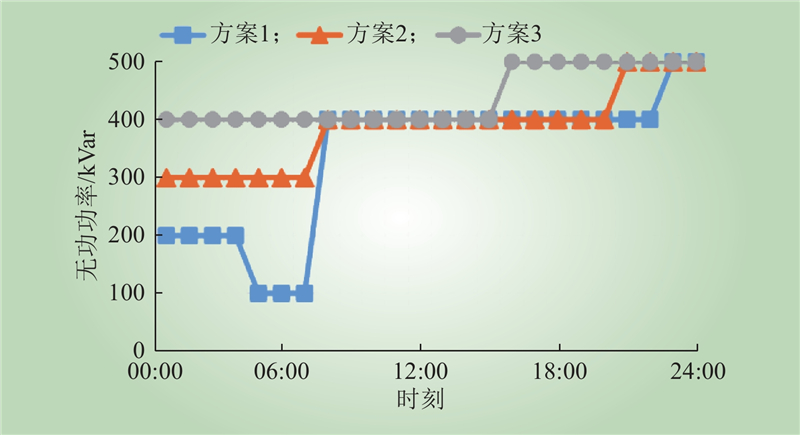| 1 |
吴思航, 沈弘, 齐磊, 等. 短路工况下柔直换流站直流场内瞬态电场预测分析[J]. 中国电力, 2021, 54 (9): 109- 118.
|
|
WU Sihang, SHEN Hong, QI Lei, et al. Prediction and analysis of transient electric field in DC yard of flexible converter station under short-circuit conditions[J]. Electric Power, 2021, 54 (9): 109- 118.
|
| 2 |
刘宗, 何俊, 黄文涛, 等. 基于态势感知的高渗透率电动汽车接入电网后电压调整策略[J]. 中国电力, 2023, 56 (2): 32- 44.
|
|
LIU Zong, HE Jun, HUANG Wentao, et al. Voltage adjustment strategy for high-penetration electric vehicles connected to power grid based on situation awareness[J]. Electric Power, 2023, 56 (2): 32- 44.
|
| 3 |
王典, 潘超, 鹿丽, 等. 计及风-光时序相关特性的源-储并网阶段式规划策略[J]. 东北电力大学学报, 2020, 40 (4): 1- 10.
|
|
WANG Dian, PAN Chao, LU Li, et al. Source-storage staged planning strategy considering wind-photovoltaic timing related characteristics[J]. Journal of Northeast Electric Power University, 2020, 40 (4): 1- 10.
|
| 4 |
闫桂红, 李丹丹, 刘小恺, 等. 分布式调相机对大规模新能源直流送端系统的稳定特性影响[J]. 内蒙古电力技术, 2024, 42 (4): 80- 86.
|
|
YAN Guihong, LI Dandan, LIU Xiaokai, et al. Impact of distributed regulator on stability characteristics of large-scale new energy DC sending-end system[J]. Inner Mongolia Electric Power, 2024, 42 (4): 80- 86.
|
| 5 |
郑凯, 蒋致乐, 刘明礼, 等. 流域梯级水电站负荷短期联合优化调度研究[J]. 电力科技与环保, 2023, 39 (4): 305- 313.
|
|
ZHENG Kai, JIANG Zhile, LIU Mingli, et al. Study on short-term joint optimal operation of cascaded hydropower stations[J]. Electric Power Technology and Environmental Protection, 2023, 39 (4): 305- 313.
|
| 6 |
李晨, 张昊, 周济, 等. 考虑频率电压空间分布特性的电网实时减载及负荷恢复策略[J]. 电力科学与技术学报, 2021, 36 (2): 162- 171, 216.
|
|
LI Chen, ZHANG Hao, ZHOU Ji, et al. Load shedding and load recovery strategy considering spatial distribution characteristics of frequency and voltage[J]. Journal of Electric Power Science and Technology, 2021, 36 (2): 162- 171, 216.
|
| 7 |
李希德, 张艳, 曹阳, 等. 基于精细化模拟的电力系统电力电量平衡研究[J]. 智慧电力, 2024, 52 (10): 70- 78.
|
|
LI Xide, ZHANG Yan, CAO Yang, et al. Power and energy balance method for power system based on refined simulation[J]. Smart Power, 2024, 52 (10): 70- 78.
|
| 8 |
魏承志, 李俊豪, 涂春鸣, 等. 计及变压器与SOP损耗特性的柔性互联配电网优化调控策略[J]. 电力系统自动化, 2023, 47 (6): 69- 78.
DOI
|
|
WEI Chengzhi, LI Junhao, TU Chunming, et al. Optimal regulation and control strategy for flexible interconnected distribution network considering loss characteristics of transformers and soft open points[J]. Automation of Electric Power Systems, 2023, 47 (6): 69- 78.
DOI
|
| 9 |
袁宇波, 张宸宇, 袁晓冬, 等. 基于柔性多状态开关的混合配电网能量管理策略与控制方法[J]. 电力系统自动化, 2021, 45 (8): 60- 67.
DOI
|
|
YUAN Yubo, ZHANG Chenyu, YUAN Xiaodong, et al. Energy management strategy and control method of hybrid distribution network based on soft open point[J]. Automation of Electric Power Systems, 2021, 45 (8): 60- 67.
DOI
|
| 10 |
刘志文, 李岩, 邵冲, 等. 考虑柔性资源协同互动的配电网灵活性评估方法[J]. 中国电力, 2024, 57 (10): 158- 165.
|
|
LIU Zhiwen, LI Yan, SHAO Chong, et al. Distribution network flexibility evaluation method considering collaborative interaction of flexible resources[J]. Electric Power, 2024, 57 (10): 158- 165.
|
| 11 |
胡鹏飞, 朱乃璇, 江道灼, 等. 柔性互联智能配电网关键技术研究进展与展望[J]. 电力系统自动化, 2021, 45 (8): 2- 12.
DOI
|
|
HU Pengfei, ZHU Naixuan, JIANG Daozhuo, et al. Research progress and prospects of key technologies of flexible interconnected smart distribution network[J]. Automation of Electric Power Systems, 2021, 45 (8): 2- 12.
DOI
|
| 12 |
葛少云, 李俊锴, 刘洪, 等. 计及弹性响应的需求侧资源与软开关联合规划[J]. 天津大学学报(自然科学与工程技术版), 2022, 55 (5): 462- 470.
|
|
GE Shaoyun, LI Junkai, LIU Hong, et al. Coordinated planning of soft open points and demand-side resources considering an elastic response[J]. Journal of Tianjin University (Science and Technology), 2022, 55 (5): 462- 470.
|
| 13 |
李岩, 陈夏, 李巍巍, 等. 基于智能软开关与联络开关并联的柔性配电网互联结构与控制技术研究[J]. 中国电机工程学报, 2022, 42 (13): 4749- 4759.
|
|
LI Yan, CHEN Xia, LI Weiwei, et al. Research on interconnection structure and control technology of flexible distribution network based on soft open point in parallel with interconnection switch[J]. Proceedings of the CSEE, 2022, 42 (13): 4749- 4759.
|
| 14 |
王杰, 王维庆, 王海云, 等. 考虑越限风险的主动配电网中DG、SOP与ESS的两阶段协调规划[J]. 电力系统保护与控制, 2022, 50 (24): 71- 82.
|
|
WANG Jie, WANG Weiqing, WANG Haiyun, et al. Two-stage coordinated planning of DG, SOP and ESS in an active distribution network considering violation risk[J]. Power System Protection and Control, 2022, 50 (24): 71- 82.
|
| 15 |
何叶, 杨晓东, 吴红斌, 等. 面向新型配电系统灵活性提升的智能软开关与储能系统协调规划[J]. 电力系统自动化, 2023, 47 (18): 142- 150.
DOI
|
|
HE Ye, YANG Xiaodong, WU Hongbin, et al. Coordinated planning of soft open point and energy storage system for flexibility enhancement of new distribution system[J]. Automation of Electric Power Systems, 2023, 47 (18): 142- 150.
DOI
|
| 16 |
葛少云, 侯亭玉, 吴鸣, 等. 柔性互联配电网分布式电源承载能力分布鲁棒优化模型[J]. 电力系统自动化, 2023, 47 (13): 140- 148.
DOI
|
|
GE Shaoyun, HOU Tingyu, WU Ming, et al. Distributionally robust optimization model of hosting capability for distributed generators in flexible interconnected distribution network[J]. Automation of Electric Power Systems, 2023, 47 (13): 140- 148.
DOI
|
| 17 |
李争, 张蕊, 孙鹤旭, 等. 可再生能源多能互补制-储-运氢关键技术综述[J]. 电工技术学报, 2021, 36 (3): 446- 462.
|
|
LI Zheng, ZHANG Rui, SUN Hexu, et al. Review on key technologies of hydrogen generation, storage and transportation based on multi-energy complementary renewable energy[J]. Transactions of China Electrotechnical Society, 2021, 36 (3): 446- 462.
|
| 18 |
叶健强, 孙敦虎. 碳交易条件下基于鲁棒优化的电源规划研究[J]. 发电技术, 2024, 45 (3): 566- 574.
DOI
|
|
YE Jianqiang, SUN Dunhu. Research on power planning based on robust optimization under carbon trading condition[J]. Power Generation Technology, 2024, 45 (3): 566- 574.
DOI
|
| 19 |
杨畅, 李正烁. 计及可变流量调节模式的电热综合能源系统条件分布鲁棒优化调度[J]. 中国电机工程学报, 2024, 44 (12): 4702- 4715.
|
|
YANG Chang, LI Zhengshuo. Conditional distributionally robust optimization of integrated electricity and heat systems with variable flow regulation modes[J]. Proceedings of the CSEE, 2024, 44 (12): 4702- 4715.
|
| 20 |
齐彩娟, 陈宝生, 韦冬妮, 等. 考虑主从博弈定价模式的共享储能分布鲁棒优化配置方法研究[J]. 中国电力, 2024, 57 (7): 40- 53.
|
|
QI Caijuan, CHEN Baosheng, WEI Dongni, et al. Distributionally robust optimal configuration for shared energy storage based on stackelberg game pricing model[J]. Electric Power, 2024, 57 (7): 40- 53.
|
| 21 |
BAGHERI A, WANG J H, ZHAO C Y. Data-driven stochastic transmission expansion planning[J]. IEEE Transactions on Power Systems, 2016, 32 (5): 3461- 3470.
|
| 22 |
钱仲豪, 胡骏, 沈思辰, 等. 考虑条件风险价值的多源协调优化运行策略[J]. 发电技术, 2023, 44 (6): 781- 789.
DOI
|
|
QIAN Zhonghao, HU Jun, SHEN Sichen, et al. Multi-power coordinated optimization operation strategy considering conditional value at risk[J]. Power Generation Technology, 2023, 44 (6): 781- 789.
DOI
|
| 23 |
孙东磊, 王宪, 孙毅, 等. 基于多面体不确定集合的电力系统灵活性量化评估方法[J]. 中国电力, 2024, 57 (9): 146- 155.
|
|
SUN Donglei, WANG Xian, SUN Yi, et al. Polyhedral uncertainty set based power system flexibility quantitative assessment[J]. Electric Power, 2024, 57 (9): 146- 155.
|
| 24 |
ZULPO R S, LEBORGNE R C, BRETAS A S. Optimal siting and sizing of distributed generation through power losses and voltage deviation[C]//2014 16th International Conference on Harmonics and Quality of Power (ICHQP). Bucharest, Romania. IEEE, 2014: 871–875.
|
| 25 |
DING T, LIN Y L, LI G F, et al. A new model for resilient distribution systems by microgrids formation[J]. IEEE Transactions on Power Systems, 2017, 32 (5): 4145- 4147.
DOI
|
| 26 |
ZHAO C Y, GUAN Y P. Data-driven stochastic unit commitment for integrating wind generation[J]. IEEE Transactions on Power Systems, 2015, 31 (4): 2587- 2596.
|
| 27 |
FARIVAR M, LOW S H. Branch flow model: relaxations and convexification: part I[J]. IEEE Transactions on Power Systems, 2013, 28 (3): 2554- 2564.
DOI
|
| 28 |
GU Y X, WANG J X, ZHENG K D, et al. Cost sharing mechanism for reactive power management amidst P2P energy sharing[C]//2020 IEEE Power & Energy Society General Meeting (PESGM). Montreal, QC, Canada. IEEE, 2020: 1–5.
|
| 29 |
LI P, JI H R, YU H, et al. Combined decentralized and local voltage control strategy of soft open points in active distribution networks[J]. Applied Energy, 2019, 241, 613- 624.
DOI
|
| 30 |
LOFBERG J. YALMIP: a toolbox for modeling and optimization in MATLAB[C]//2004 IEEE International Conference on Robotics and Automation. Taipei, China. IEEE, 2004: 284–289.
|
| 31 |
NICK M, CHERKAOUI R, PAOLONE M. Optimal allocation of dispersed energy storage systems in active distribution networks for energy balance and grid support[J]. IEEE Transactions on Power Systems, 2014, 29 (5): 2300- 2310.
DOI
|







